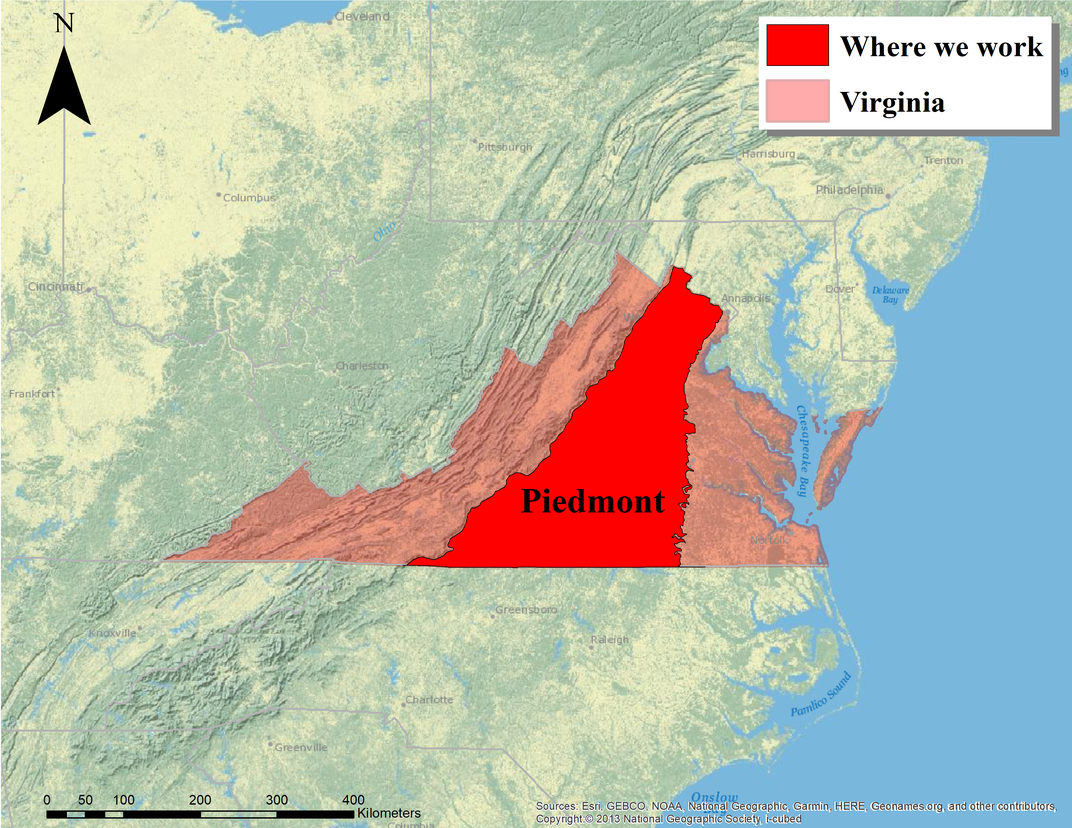Eastern meadowlarks are an icon of eastern farmland who are threatened by suburban development. Smithsonian scientists track meadowlarks to understand which habitats they use at different times of the year to support populations throughout the full annual cycle.

Height: 19-26 cm (7.5 to 10.2 in)
Weight: 90-150 g (3.2 to 5.3 oz)
Wingspan: 35-40cm (13.8 to 15.8 in)
The Eastern Meadowlark is an iconic indicator species of eastern grasslands. Unfortunately, its populations have declined by more than 70% since the 1970’s.
Conservation Status: Near Threatened

Knowing which habitats meadowlarks use at different times of year is critical for developing best management practices that support populations throughout the full annual cycle. Moreover, sharing this information with private landowners is essential for developing successful conservation strategies moving forward.

Dr. Amy Johnson, program director for Virginia Working Landscapes, holds an eastern meadowlark.
Movement of life scientists are collaborating with scientists at the Smithsonian’s Virginia Working Landscapes to use new technologies to answer questions about meadowlark movement. In 2019, Virginia Working Landscapes and Movement of Life initiated a pilot study on eastern meadowlarks in the Piedmont region of Virginia using multiple tracking methods, including the Motus tower network. Although our research has demonstrated that meadowlarks occur in Virginia year-round, we do not know if populations are year-round residents or if observed wintering birds are short-distance migrants from northern populations. Knowing this will help identify appropriate conservation measures for supporting populations on both breeding and wintering grounds.

Project Intern October Greenfield (2019) flies a drone over a hay field at the Smithsonian Conservation Biology Institute while intern Sarah Macey monitors behavioral responses from the bird community.
Smithsonian scientists are also testing whether heat-sensing drones can be used to search for grassland bird nests on working farms in Virginia. Traditional nest survey methods can be invasive with some causing unintended stress to nesting birds. Additionally, scent trails left by human surveyors may lead predators to the nests. By combining drones with high resolution thermal cameras, we aim to develop an efficient and minimally invasive tool for nest identification.

Infrared images like the one above can help scientists detect meadowlark nests that are otherwise difficult to identify underneath tall grasses.
Ecologist, MoL Program Manager
Smithsonian Conservation Biology Institute Conservation Ecology Center National Zoological Park
Director, Georgetown Environment Initiative
Laudato Si' Professor of Biology and the Environment Georgetown University Emeritus Senior Scientist, Migratory Bird Center Smithsonian Conservation Biology Institute National Zoological Park
Ecologist, MoL Terrestrial Program Lead
Smithsonian National Zoo & Conservation Biology Institute (NZCBI), Conservation Ecology Center